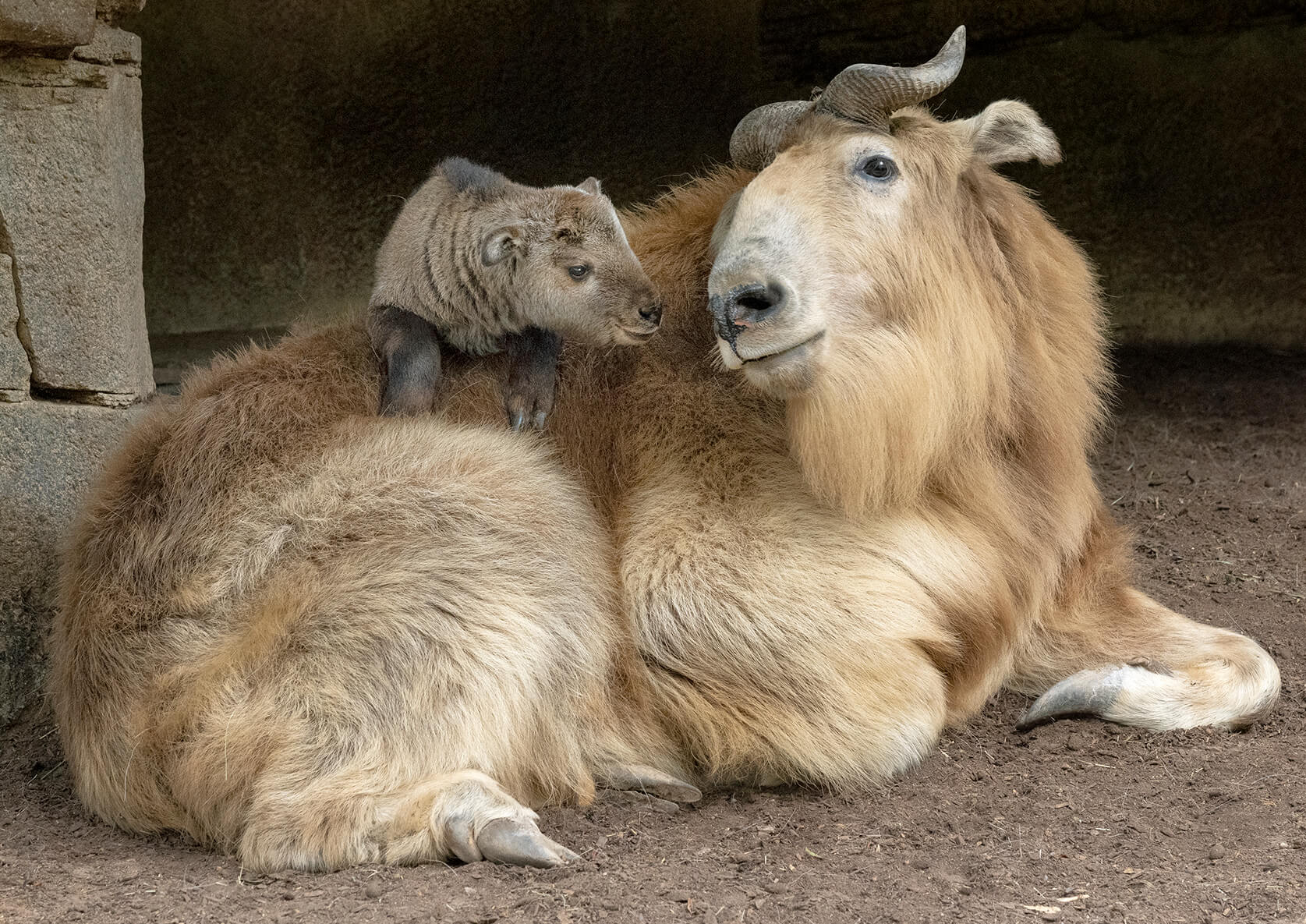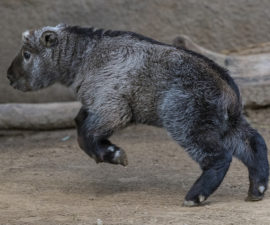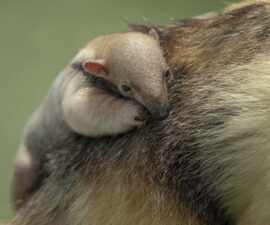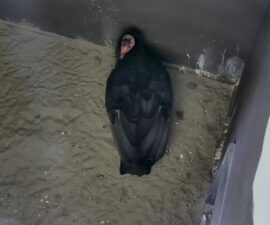BY Peggy Scott
Takin Kid Birth Is a First
One small step for Mei Ling, one giant leap for takin-kind.
When Mei Ling, the fuzzy, 18-pound golden takin kid arrived on April 14, 2021, at the San Diego Zoo, it wasn’t just a first for her mother, Bona. The little female’s birth was also the first of its subspecies, Budorcas taxicolor bedfordi,in the Western Hemisphere. The San Diego Zoo is the only place in the Western Hemisphere where golden takins (rhymes with “rockin’”) can be seen—and our wildlife care team couldn’t be happier with the newest addition. “With a first-time mother, you’re never really sure how it’s going to go,” explains Karen Scott, a senior wildlife care specialist at the Zoo. “But even from the very beginning, she was very protective of her kid.”
And Mei Ling continues to thrive. In her first two months of life, she more than tripled in size, to approximately 67 pounds. With her thick, lustrous coat, she lives up to her name, which means “beautiful antelope” in Mandarin—even though takins are most closely related to sheep. Very, very big sheep. Her father, Zhao, tips the scales at 850 pounds, while Bona is relatively petite at nearly 500 pounds. Like sheep, cows, and other members of the Bovidae family, golden takins are ruminants, and pass food into the first stomach, the rumen, when they first swallow it. Microbes in the rumen help digest very small particles of food. Larger particles pass into a second chamber that regurgitates these particles, called cud, back into the mouth to be chewed into pieces small enough to be properly digested.
This species’ resilience, lifestyle, and appearance are literally the stuff of legends. Unfortunately, takins—including golden takins—are also vulnerable, so San Diego Zoo Wildlife Alliance is working to help ensure their story continues for many more chapters.
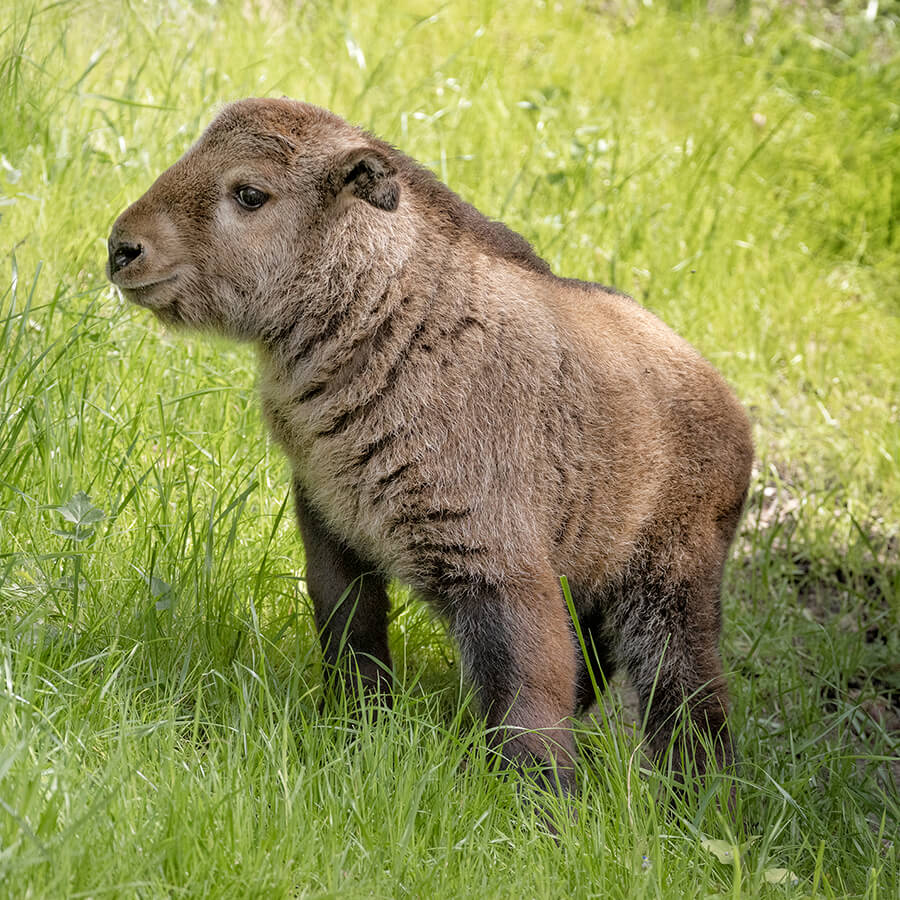
Native to the Mountains in China’s southern Shaanxi province, golden takins share a range with another Chinese national treasure, the giant panda. But while the giant panda is instantly recognizable, pinning down the taxonomy of a golden takin is a little trickier. With its bulbous, moose-like muzzle, stocky, bovine body, goat-type legs, and antelope-esque horns, it’s no surprise that golden takin is sometimes called “the hybrid from the Himalayas.” “Golden takins’ bodies do look like a little bit of everything,” Karen acknowledges, adding that the species’ composition is perfect for life in the high elevation of their native Himalayan Mountain habitat. “They live up in the cold in China, and their thick coats protect them.” Even the size and shape of the takin’s nose is performance driven: the large sinus cavity allows air to warm up before entering the animal’s lungs. This warm air helps keep everything inside the takin’s body warm and comfortable. “And they are built for hills,” Karen explains. “That powerful chest and front end carries them up hills easily. They are awesome climbers, and those horns shear the way through the tall bamboo. They make paths that other species follow.”
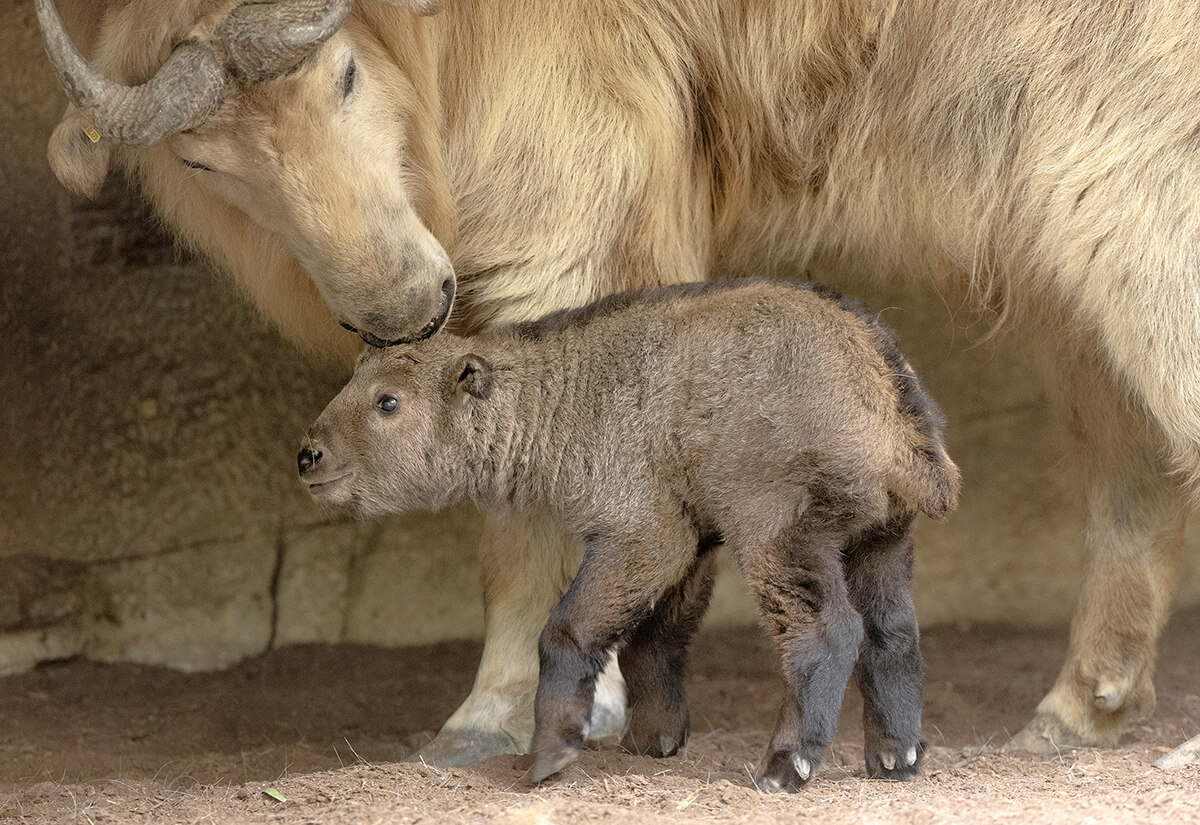
With fewer than 5,100 golden takins left in their native range, every addition is significant, making Bona’s successful pregnancy all the more noteworthy. From day one, Karen notes, Mei Ling was confident and “in charge,” even if it was Bona making the rules. “But this was all new to our herd. At first, Sue, the other adult female in the habitat was interested in the kid and would approach,” she says. “But Bona would keep her away. Zhao, the father, was awesome and gave her space.” As time passed and each member of the herd became more acclimated to the changing dynamic, Bona relaxed—and Mei Ling was emboldened. “She ran the herd,” Karen says. “If she didn’t want to shift habitat, the adults didn’t. And Sue? Sue is like a babysitter. She’s a little bit younger, so she’s happy to play with Mei Ling, letting her climb on her and play-spar with her.”
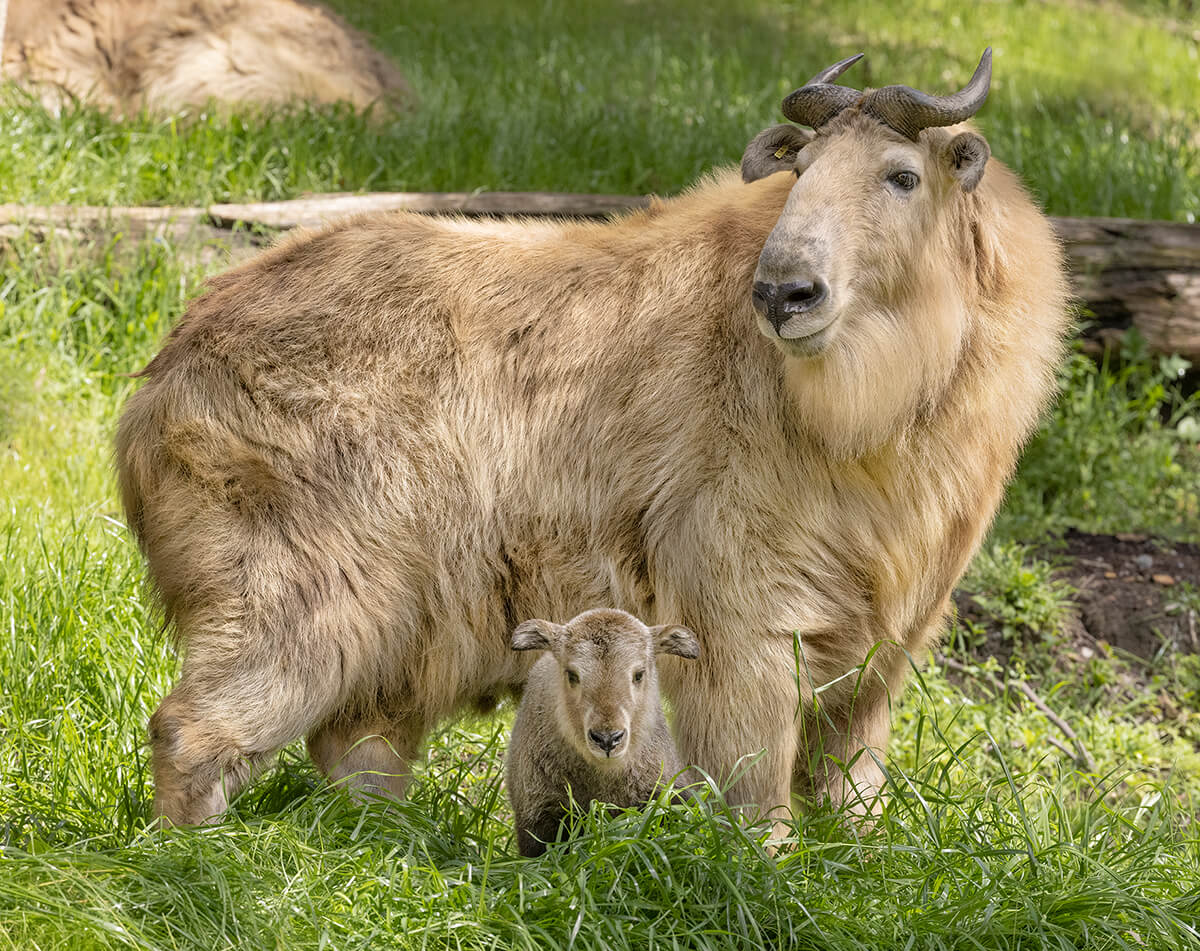
The herd behaviors that Mei Ling is learning mirror what she would experience in the species’ native range. The kids scale the adults to practice the climbing skills they will need in their rocky, mountainous environment. The species is agile, navigating rugged landscapes with ease, Karen says, noting that the Zoo’s herd can be seen traversing up and down the rocks of their habitat, “huffing and puffing” in mock “battles.” The species’ physicality—not to mention its robustness—are the main reasons why animal care specialists don’t venture into the habitat with the takins. “They’re strong, and they’re playful,” Karen says, “And they’re big. We respect that.”
San Diego Zoo guests can visit the golden takins in the Zoo’s Asian Passage. “They are such a unique animal,” Karen says. “And this herd is coming together nicely.”
(Top photo by: Ken Bohn/SDZWA)

